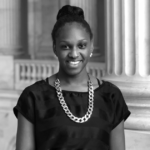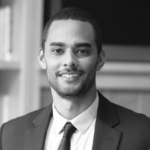Creating High-Quality, Inclusive, and Equitable Educational Experiences for All of New York City’s Students
School closures and remote learning during the pandemic exposed and worsened the pre-existing inequities in New York City’s public school system, and revealed that too many families of color lack trust in the system. With an influx of state and federal funds, a new mayor has an opportunity to raise the bar on quality and equity in K–12 education as the city recovers.
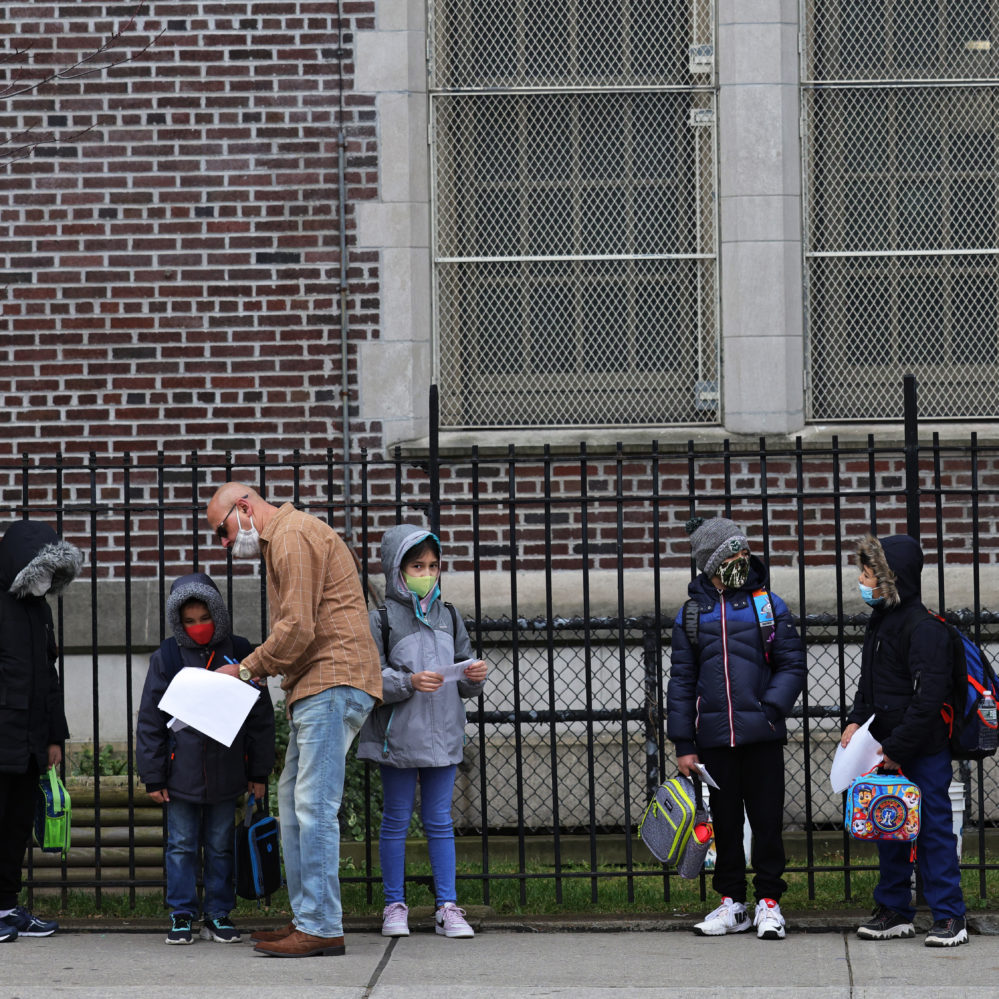
Executive Summary
For many New Yorkers, the COVID-19 pandemic has massively disrupted their ability not only to thrive, but to survive. This reality has been particularly true for the city’s children and for the parents, caregivers, and educators who work hard to support them. The pandemic initially forced all of New York City’s school buildings to close, catapulting students, families, and educators into an unfamiliar and challenging world of remote learning, with deeply inequitable impacts. And as school buildings have reopened, students, families and educators have had to weigh tough decisions about health, safety, and academics, and implement new precautions for in-person learning. It comes as little surprise then that the pandemic has left many of the city’s roughly one million public school students across over 1,800 public, district, and charter schools1 in need of myriad direct supports to address the educational disruptions and emotional trauma they have experienced during the past year and continue to experience.
All of these challenges were layered on top of a deeply inequitable education system that long predated the pandemic, and that left Black and Latinx students less likely to succeed, graduate college-ready, and/or attain a postsecondary credential that would lead to a family-sustaining career. As of 2019, only 35 percent of the city’s Black students, 36.5 percent of the city’s Latinx2 students, and 9 percent of the city’s multilingual learners were at grade level on the state English language arts (ELA) assessment, compared to 66.6 percent of white students and 67.9 percent of Asian students.3 Likewise, just 45 percent of Black and Latinx students, and only 9.5 percent of multilingual learners, met the City University of New York’s (CUNY’s) standards for college readiness after four years in high school, compared to over 70 percent of white and Asian students.4 In a December 2020 citywide poll , 88 percent of survey respondents said that improving education and the city’s public schools was a priority, and only 44 percent of New Yorkers thought that schools were doing a good job of preparing students for college and careers.5
The current mayoral administration has taken steps to address the disruption that the pandemic has caused, including announcing a framework for academic recovery that includes new investments in early literacy, special education services, curriculum development, college counseling, and other programs; 6 however, much more remains to be done. New York City students and their families deserve a recovery that recognizes the assets of all students and their families, and also addresses the substantial educational inequities that predated the pandemic and were worsened by this crisis. A just recovery must raise the bar on quality and equity in P–12 education. The next mayor must reimagine a better public school system that provides all students, beginning in 3-K, with supportive, integrated, and high-quality learning environments that reflect the racial, socioeconomic, and cultural diversity of the city, and that prepare all students for college and career pathways.
Specifically, the next mayor should:
- Mitigate pandemic-related learning disruption and the social, emotional, and mental health toll the pandemic has taken on students and families by providing targeted, personalized, high-impact tutoring, acceleration academies, and tiered mental health and social emotional supports.
- Improve the quality and cultural responsiveness of the curricula and instructional materials all students are learning from, and provide educators with aligned, high-quality preparation, professional development and other supports, including working with educators, families, and students to develop, or identify and adapt materials, and supporting strong implementation across all schools.
- Give more students access to socioeconomically and racially diverse learning environments by implementing more equitable enrollment policies, funding and supporting community-driven integration planning processes, and opening new high-quality integrated schools.
- Create a college and career readiness pipeline from elementary school through college, in district and charter schools, that provides aligned experiences for career awareness, exploration, planning, preparation, and training, including paid internships and apprenticeships as well as opportunities to earn college credit while still in high school.
FROM CRISIS TO OPPORTUNITY
View other works in this collection below.
- Introducing “From Crisis to Opportunity: A Policy Agenda for an Equitable NYC”
- Policy Recommendations for an Equitable NYC
- Building a High-Quality Child Care and Early Learning Infrastructure for New York City
- Creating High-Quality, Inclusive, and Equitable Educational Experiences for All of New York City’s Students
- Promoting a Rapid, Equitable Economic Recovery from COVID-19 for New York City
- Strengthening Housing Stability and Increasing Opportunity for Low-Income Families in New York City
- Reimagining a More Equitable Policing and Public Safety System in New York City
- Strengthening New York City’s Nonprofit Human Services Sector
Goals
Supporting each of New York City’s students to succeed academically, socially, and emotionally, and tackling the pre-existing inequities in educational opportunity must be critical priorities for the next mayor’s first term. A new administration should set ambitious goals to close existing racial disparities in third grade reading proficiency by improving reading proficiency for students of color, reach a 90 percent on-time high school graduation rate, and ensure that all graduates are college- and career-ready.7 Working from these overarching goals, a new administration should aim, by the end of its first term, to:
- provide 250,000 New York City students with personalized, high-impact accelerated learning opportunities through tutoring or acceleration academies, and develop a plan to sustain this work in a targeted way;
- provide the 425,000 students and their families at the 829 schools in the thirty-three neighborhoods hardest hit by COVID-19 with school-based mental health services by the beginning of the 2022–23 school year, and provide training on trauma-informed healing practices for school personnel citywide;
- ensure 100 percent of students are taught with high-quality, standards-aligned, culturally responsive curricula and instructional materials, and 100 percent of educators receive aligned professional development;
- enroll 10,000 students across twenty newly created, integrated, high-quality schools; and
- provide 160,000 high school students per year with a high-quality, paid work experience on a pathway to a mobility-wage career.
Throughout this section, we rely on the following definition of a high-quality education (or school):
A high-quality education ensures that all students master the academic, socioemotional, and career-relevant knowledge and skills they need to be prepared for postsecondary success and lifelong learning, through providing students with:
- rigorous instruction, including coherent, culturally responsive, standards-aligned curricula, and work-based learning experiences;
- opportunities to have experiences that ignite curiosity and allow students to discover their passions and talents;
- a supportive and safe learning environment where students feel a sense of belonging and develop meaningful relationships with adults and peers;
- an inclusive school culture that celebrates diversity as well as respect for and acknowledgement of all aspects of students’ identities and cultural heritages;
- access to physical health and tiered mental health services to support students’ holistic well-being and development;
- a community that fosters trust and respect between teachers, students, and families, working toward the shared goals of improving student outcomes and preparing students for postsecondary success; and
- scaffolded support to identify and attain a postsecondary path of their choosing.
A high-quality education is provided by educators who:
- are well-prepared, well-supported, and reflect the demographics of the student body, and are committed to the growth and success of their students; and
- receive high-quality, content-rich professional development within a culture of respect and continuous improvement.
Background and Need
Long before the COVID-19 crisis, New York City’s educational system and policies offered unequal opportunities that yielded unequal outcomes, with substantial disparities for Black and Latinx students, students from low-income backgrounds, multilingual learners, students with disabilities, and students experiencing homelessness. While New York State assessments were canceled in 2020, as of 2019, less than half of the city’s third- to eighth-grade students scored proficient (that is, at grade level) on the state exams in ELA and math. Only 35 percent of the city’s Black students and 36.5 percent of the city’s Latinx students in district schools scored proficient in ELA, compared to 66.6 percent of white students and 67.9 percent of Asian students (see Figures 1 and 2). Similar gaps exist for students experiencing poverty. While the percentage of students experiencing poverty who scored proficient on the state exams has nearly doubled since 2013, their proficiency rates continue to be 25 percentage points below their wealthier counterparts.8
FIGURE 1
FIGURE 2
The city has made impressive improvements in high school graduation rates and the transition to college in recent years, however, equity gaps persist in those areas as well. In 2019, approximately 77 percent of students graduated high school in four years, an increase from 63 percent in 2009.9 However, large disparities in graduation rates by race remain: Asian and white students had graduation rates of 88 percent and 85 percent, respectively, while Black students were at 74 percent and Latinx students at 72 percent.10 Multilingual learners (meaning students learning English at school) had a graduation rate of just 46 percent,11 and thousands of newcomer immigrant youth in the city are not currently enrolled in school.12
College readiness and college enrollment have also increased in recent years, but not all students’ educational experiences have prepared them for the rigors of college-level academic content. In 2019, 55 percent of New York City students had met CUNY’s standards for college readiness after their fourth year in high school, a significant increase from 28 percent in 2011. Racial gaps in college readiness have narrowed slightly over that time period but are still significant, with roughly 45 percent of Black and Latinx students meeting the standards compared to over 70 percent of white and Asian students.13 Well over half of the city public school graduates who enroll at CUNY’s community colleges must take a remedial course, decreasing their likelihood of completing a college degree compared to their peers.14 In addition, roughly 33,000 New York City children ages 0 to 17 are undocumented immigrants, who face additional hurdles applying to, enrolling in, and paying for college.15
These unequal outcomes stem from a school system with unequal opportunity, and quality, and high levels of socioeconomic and racial segregation. While New York City is one of the most diverse cities in the world, its school system is one of the most socioeconomically and racially segregated in the country.16 Overall public school enrollment is quite diverse: 41 percent of students are Latinx; 25 percent Black; 16 percent Asian; 15 percent white; and 3 percent identify as other racial categories.17 More than 40 percent of New York City public school children speak a language other than English at home. For multilingual learners, they or their families come from over 190 different countries and communicate in over 150 different languages.18 This rich diversity is an educational asset,19 but comparatively few students experience this diversity in their classrooms. Four out of five elementary schools have students representing a single racial or ethnic group in the majority,20 and while over 70 percent of the city’s students overall experience poverty, the student populations in high-poverty schools are disproportionately Black and Latinx. Seventy-one percent of Latinx students and 68 percent of Black students attend schools where at least three-quarters of students experience poverty, compared to 41 percent of Asian students and just 21 percent of white students.21 In many cases, New York City’s schools are even more segregated than the city’s neighborhoods because of the way the city has drawn school and district attendance zones and due to the impact of admissions policies such as screens based on academics, behavior, or attendance.22
The transition to remote learning during the pandemic, coupled with periodic classroom and school closures tied to positive COVID-19 cases, created a new layer of challenges to ensuring educational excellence and equity. As part of developing the policy recommendations in this report, the authors reached out to students, parents, educators, and community members and held a series of roundtable discussions with them their experience having to adjust their lives and educational experience in response to this global pandemic. At these roundtables, middle and high school students from all five boroughs discussed their needs and worries, as well as their suggestions for how the city and the next mayoral administration could improve their educational experience both during and following the COVID-19 pandemic. The students shared insights influenced by a number of factors, including socioeconomic status, race, and culture; caregiving responsibilities at home; mental health; and learning differences, among many other factors. They described dealing with anxiety and depression and navigating remote learning with spotty wifi and in shared living spaces, while simultaneously juggling caregiving responsibilities for younger siblings or grandparents. Students of all ages expressed concern about the slow pace of learning over the past year and worried that they would be ill prepared to succeed academically, and transition to college and/or to a career. They missed social interaction with their peers and worried about whether they or their families would contract COVID-19. As one Black eleventh grader from Manhattan, the daughter of immigrants, explained, “Corona and quarantine has been difficult for everyone, but for students, specifically…. We’re in our houses all day…. It doesn’t help my mental health. It doesn’t make me excited to do work. It just makes me want to lay in bed and not do anything all day.”
In December 2020, Robin Hood and the Global Strategy Group conducted a survey of 800 city residents and held focus groups and online discussion boards focused on low-income New Yorkers. Only about one-third of New Yorkers across income groups said that they thought the city’s public schools overall were doing a good or excellent job handling COVID-19. Low-income New Yorkers in particular were dissatisfied with their children’s educational experiences. They described remote learning as “chaotic” and felt that it had deepened inequalities in education, as evidenced by the survey results showing that only 33 percent of low-income public school parents felt that their child’s school was doing a good job handling remote learning, compared to 80 percent of high-income public school parents.23
These individual stories of hardship and public opinion findings showing a lack of trust in the education system that are reinforced by data and research on student experiences. Overall enrollment in the city’s public schools has dropped over the past year,24 mirroring nationwide declines in public school enrollment,25 with families of color being much more reluctant than white families to opt in to in-person learning.26 Data from January 2021 showed attendance was far below that of the previous year, with larger than normal disparities in attendance rates among specific student groups; multilingual learners and students with disabilities in high school, for example, missed one out of every four school days.27 While the current administration has not collected or shared citywide data on student learning during the pandemic, numerous studies from across the country have projected or identified substantial learning disruptions for students during this time. While this research has some variations in terms of subject and grade level, it has consistently found that the impacts are greatest for Black, Latinx, and Native students; students experiencing poverty; and students at lower-achieving schools.28 It is likely that New York City is mirroring these trends.
Although the city plans to put in place universal mental health screenings this fall, comprehensive data on the mental health needs of students, families, and educators are not currently available. That being said, mental health impact of the pandemic on students is likely to be severe, especially for students of color. Once again, national data indicates the profound impact on children’s mental health of students of all ages. From April to October of last year, for instance, the proportion of children’s pediatric emergency room visits that were mental health related jumped by almost a third for those ages 12 to 17, and 24 percent for children ages 5 to 11.29 In New York City and throughout the state, the experience of losing a caregiver and the likelihood of falling into or near poverty because of the pandemic has disproportionately affected Black and Latinx children (see Table 1).
TABLE 1
| Increased Adversity for Children Due to COVID-19, By Borough | |||
| Black and Latinx children have been disproportionately impacted citywide, with one in 600 Black children and one in 700 Latinx children losing a parent or caregiver, compared to one in 1,400 Asian children and one in 1,500 white children. | |||
| Borough | Demographic Background | Children experiencing loss of caregiver due to Covid-19 (as of July 2020) | Unemployment and children newly experiencing poverty (as of June 2020) |
 Bronx Bronx(361,000 Children) |
 |
1 in 600 children experienced the loss of a caregiver (602 children) |
24.7% unemployment26,000 children newly experiencing/near experiencing poverty |
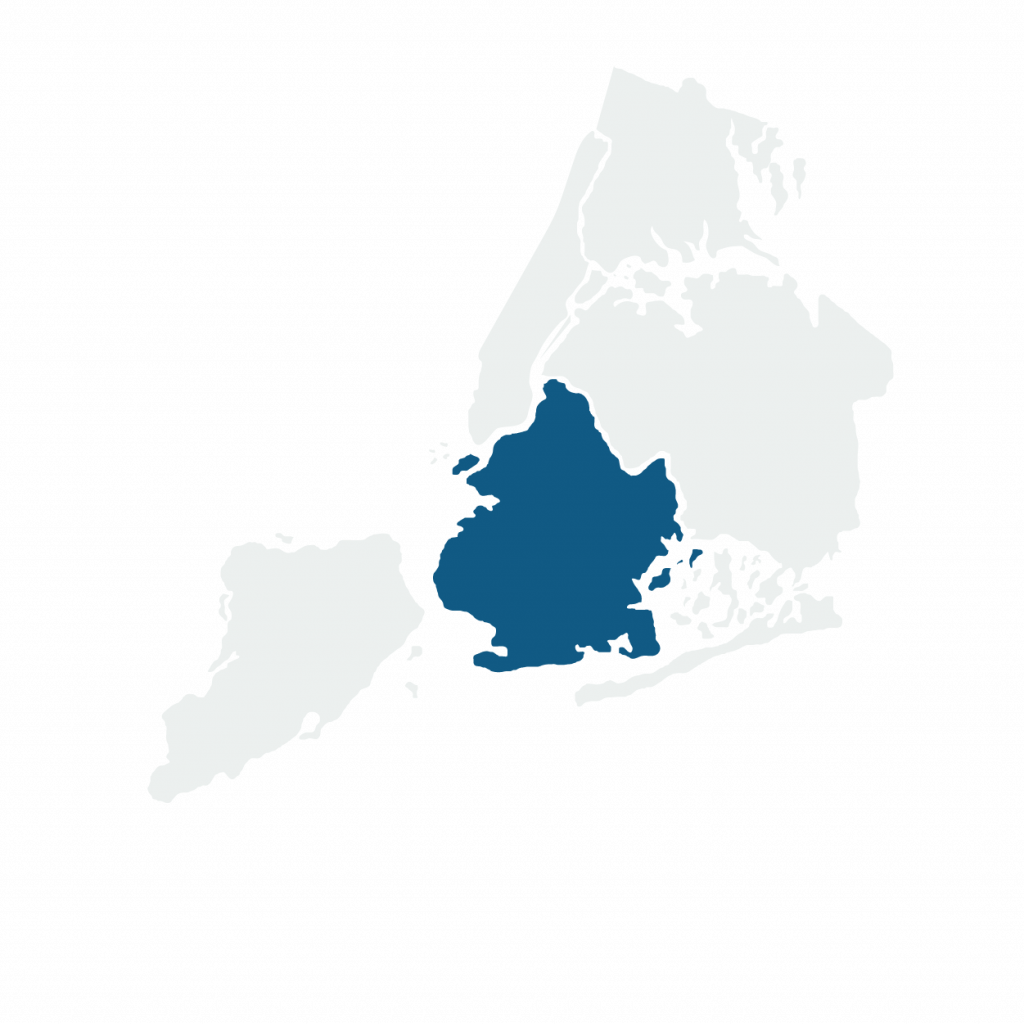 Brooklyn Brooklyn(600,000 Children) |
 |
1 in 670 children experienced the loss of a caregiver (896 children) |
20.5% unemployment50,000 children newly experiencing/near experiencing poverty |
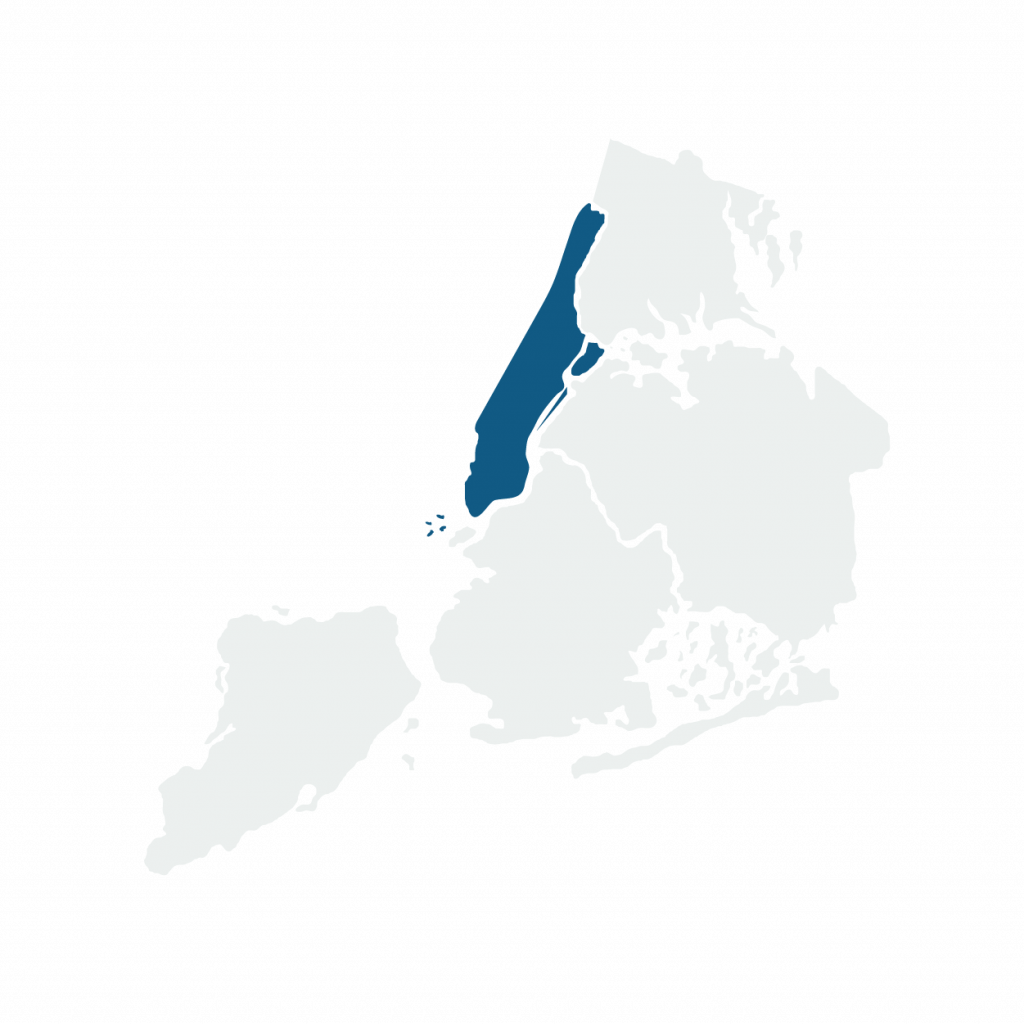
Manhattan |
 |
1 in 660 children experienced the loss of a caregiver (358 children) |
16% unemployment28,000 children newly experiencing/near experiencing poverty |
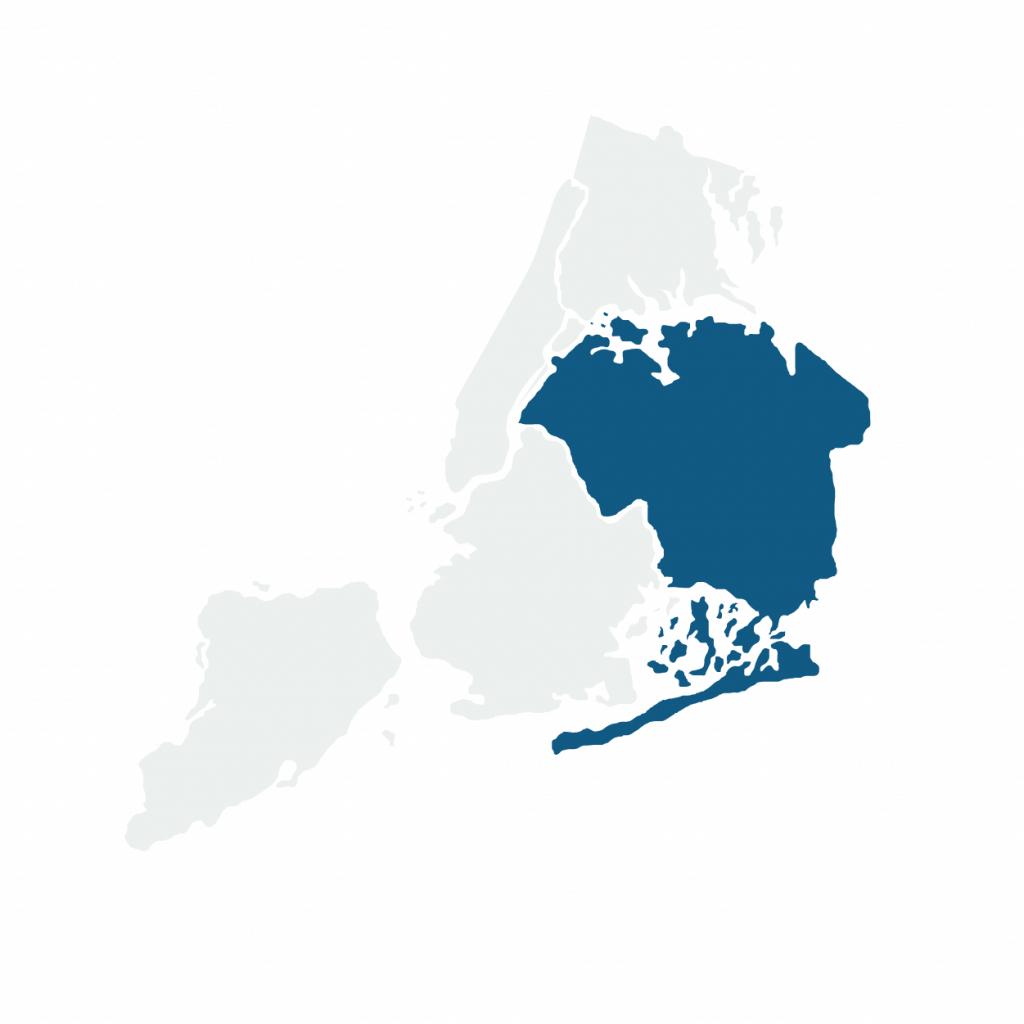
Queens |
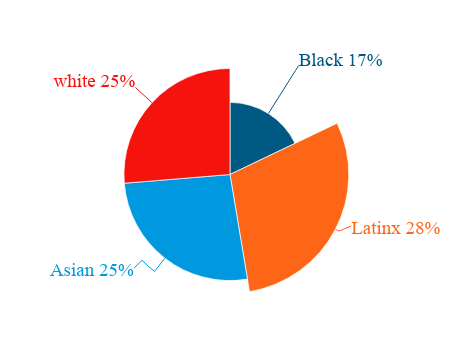 |
1 in 520 children experienced the loss of a caregiver (895 children) |
21.8% unemployment59,000 children newly experiencing/near experiencing poverty |
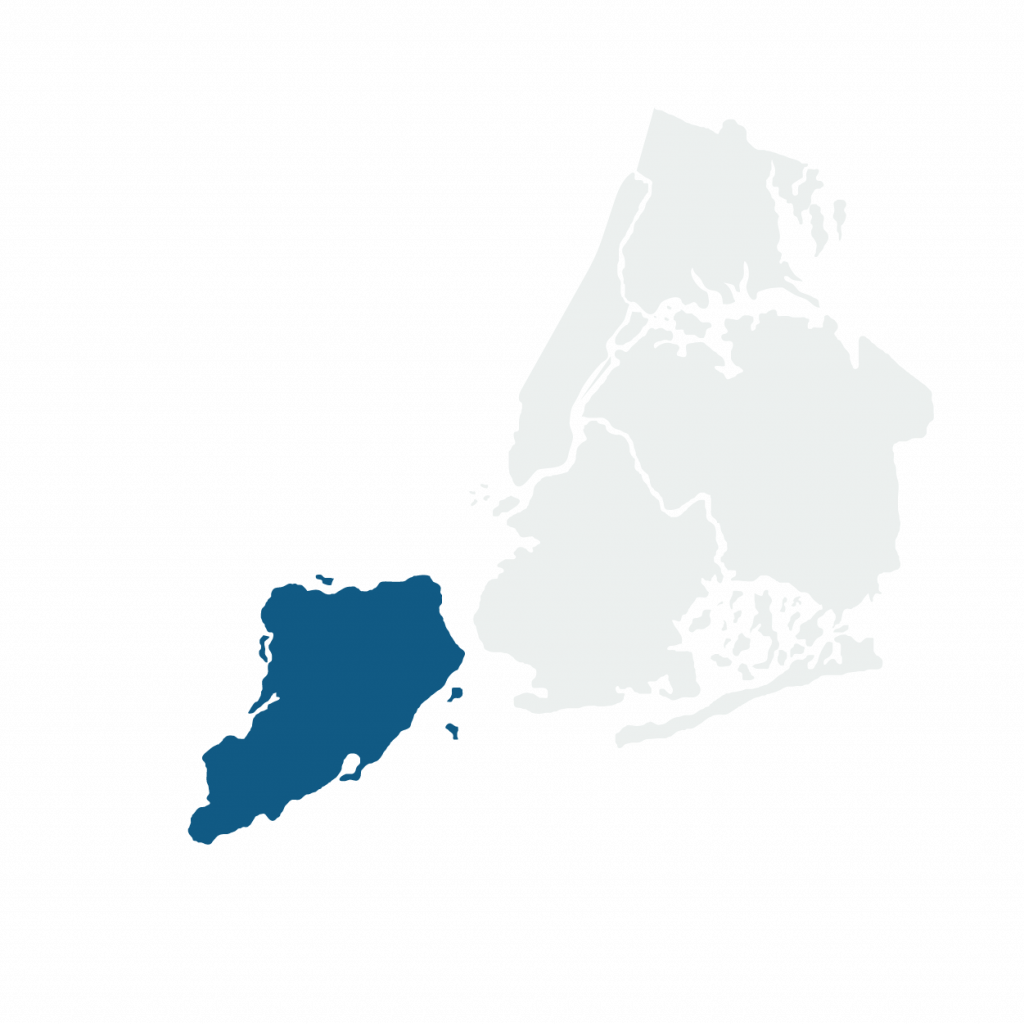
Staten Island |
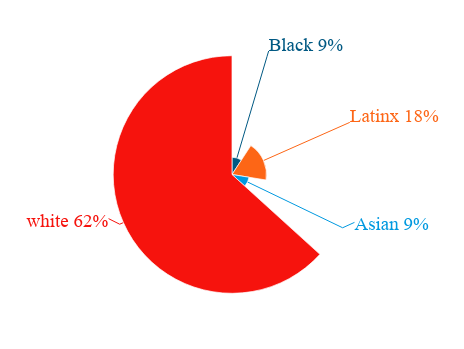 |
1 in 860 children experienced the loss of a caregiver (122 children) |
18.1% unemployment9,000 children newly experiencing/near experiencing poverty |
| Source: Suzanne C. Brundage and Kristina Ramos-Callan, “COVID-19 Ripple Effect: The Impact of COVID-19 on Children in New York State,” United Hospital Fund, September 30, 2020, https://uhfnyc.org/publications/publication/covid-19-ripple-effect-impact-covid-19-children-new-york-state/. | |||
Conditions for Success
In order for the next mayoral administration’s policy efforts to succeed for New York City children and families, it is critical that certain baseline conditions for success be in place at the city and state level.
A new administration must:
- Rebuild trust with families, including more meaningful, ongoing engagement and more accessible communications. The pandemic has demonstrated a deep lack of trust in the New York City school system by families of color. The city should conduct better outreach to and solicit more meaningful, ongoing feedback from families on strategy, policy, and implementation by: partnering with community organizations, just as the city does through its Community Schools mode. The city should also improve the accessibility of communications; and use culturally relevant communication in multiple languages and modalities, since over 40 percent of families in New York City schools speak a language other than English at home.30
- Ensure ongoing information on students’ academic achievement, and improve the quality and accessibility of data on students’ social emotional well-being, mental health, and postsecondary outcomes (for example, postsecondary access and success, economic mobility, and so on) and ensure that students, families, educators, community partners, advocacy organizations, and policymakers have access to that data broken down by demographic factors. As the current administration has proposed, the city must assess students’ academic performance citywide at the beginning of the 2021–22 school year to understand needs and direct resources, and then ensure student progress is being measured in an ongoing way. The city has already committed to implementing universal mental health screenings and to assess student exposure to trauma and adversity this fall; a new administration should ensure these screenings become a baselined practice.31 Funding from the American Rescue Plan Act offers an important opportunity to both put in place these measurement tools and further enhance city data systems, partnering with external nonprofits where appropriate, in ways that will allow the city and educators to better support students.
- Partner with charter schools. With 10 percent of the city’s public school students enrolled in charter schools, a new administration should partner with charter schools,32 rather than battle them, to ensure all of New York City’s students are well served. District and charter schools can collaborate to tackle shared challenges, and charter schools should be eligible to participate in key New York City Department of Education (DOE) initiatives, to ensure that all students have access to the best education possible, whether they are in district schools or charter schools. At the same time, the city should ensure charter schools, particularly those it authorizes, are serving students with disabilities and multilingual learners, consistent with state law.
At the state level, the legislature and governor must:
- Follow through on the commitment to fully phase in Foundation Aid. After decades of litigation and advocacy, the 2021 New York State budget finally includes a commitment to fully phase in funding for Foundation Aid, the main formula for public school funding over the next three years.33 The state must follow through to reach and sustain 100 percent funding for Foundation Aid in years to come.
- Renew mayoral control of city schools. Research from across the country shows increased student outcomes in cities with mayoral control.34 Going forward, mayoral control must be renewed before it is set to expire in 2022—to maintain a nimble, clear, decision-making structure, with an elected leader who is held accountable to families and voters—but with clear and accessible mechanisms to include more family, student, and educator input on key implementation decisions.
- Increase the charter school cap, and ensure that charter schools serve students with disabilities and multilingual learners. In New York City, applicant numbers for public charter schools outnumber available seats in every borough,35 and public opinion polls show strong support for opening new charter schools.36 The families choosing charter schools are disproportionately Black, a population that has been historically underserved in New York City.37 While quality varies, high-quality New York City charter schools show strong gains for their students.38 At the same time, data show charter schools are not enrolling students with disabilities or multilingual learners on par with other schools across the city, or at the rates that state law requires.39 The state should make room for additional high-quality charters to open in communities where there is meaningful demand, but should pair this with increased focus by charter school authorizers on ensuring that they are holding individual charter schools accountable for serving students with disabilities and multilingual learners.
Policy Responses
1. Mitigate Pandemic-Related Learning Disruption and the Social, Emotional, and Mental Health Toll the Pandemic Has Taken on Students and Families
The COVID-19 pandemic and the ensuing school closures have wreaked havoc on the social, emotional, and academic well-being of New York City students of all ages. These closures and the shift to remote learning have also challenged the social, emotional, and mental health of their families and the educators who serve them—layered on top of the pre-existing stress of poverty and hardship so many New York City families were already facing. The past year has also laid bare the lack of trust that families—particularly families of color and immigrant families—have in public schools to care for their children. As noted above, while New York City–specific data on the academic, social, emotional, and mental health toll of this year on children is not available, data from around the country suggests the impact is substantial. And the local data available suggests that the educational impact of the pandemic for students has been as inequitable as its health consequences: 62 percent of schools with the lowest attendance rates during the pandemic are in the thirty-three neighborhoods that the city classified as the hardest hit by the pandemic.40
The infusion of substantial federal American Rescue Plan Act and Foundation Aid funding to the city creates an opportunity to intentionally invest in dedicated, evidence-based practices and programs to address pandemic-related learning disruption and the social, emotional, and mental health toll the pandemic has taken on students and families (as well as put in place systemic reforms to address pre-existing inequities, such as better, more culturally responsive instructional materials—see below). A new mayoral administration must expand on and extend the current administration’s proposed investments in a way that ensures funds are focused on evidence-based practices with strong implementation, and prioritizes students in the hardest hit neighborhoods and those experiencing the greatest need while; acknowledging that recovery from the pandemic will be a multi-year undertaking that requires multi-year investments. Without proper and sustained academic acceleration and mental health support, the interruptions of the past year could substantially impact students’ long-term outcomes and opportunities.41
A new administration must address these learning disruptions and social, emotional, and mental health needs in five key ways:
- Build a local tutor corps—Tutor NYC—to support targeted, deep academic recovery, working with nonprofit and higher education partners. The evidence base supporting the efficacy of high-quality, high-impact tutoring programs is strong, and has been replicated multiple times,42 although never at the scale currently needed in New York City. To bring together the strongest tutoring providers and the best supports for New York City students, the next mayor should partner with community-based organizations, institutions of higher education, and researchers to implement a citywide tutor corps—Tutor NYC—to recruit, select, and train tutors to help New York City students in need of support over multiple school years. This effort should focus on targeted scaling of high-quality, high-impact tutoring providers with a strong evidence base and replication of such models, with a goal of supporting one in five New York City students a year. High-impact tutoring should be targeted to the schools and students with the greatest academic needs, based on citywide assessments. Recruitment for tutors should focus on the communities prioritized for academic support, bringing in community members and pre-service educators as tutors whenever possible, to both leverage the power of the community and build a pipeline of diverse educators. Tutor NYC could support both whole school or more targeted approaches, with a preference for whole school models where practicable, as long as they are consistent with the research base and include the key design components that have been utilized in effective programming (see text box).43 Based on a building evidence base, it appears that well-designed tutoring can be effective online or in-person, so the city should consider both models for different groups of students, taking into account that in-person models cost more, but are more likely to engage community residents in the work, and contribute to a diverse educator pipeline in the long-term. To understand the impact of this investment and better support students and tutors, the DOE should develop an ongoing, central performance-tracking system. If this program proves effective, tutoring could be continued in a more targeted way as a longer-term investment.
High-Quality, High-Impact Tutoring Best Practices44
•Students working in an ongoing way with the same tutor, and a relatively small tutor-to-student ratio, no larger than 4:1, that allows for targeted and individualized support.
•Tutoring is ideally implemented as part of the traditional or a longer school day, and ideally as part of a whole school intervention.
•Tutoring should be curriculum-based and culturally responsive.
•Tutors should receive specific, ongoing training and coaching.
•Tutoring should supplement and not supplant classroom instruction, the arts, and physical education, and other enrichment activities.
- Implement Acceleration Academies to provide targeted, small-group ELA and math instruction to students who need additional support. Extended learning time interventions such as weeklong acceleration academies (also known as “vacation academies”) show strong evidence of effectiveness and can be a scalable approach to individualizing instruction.45 Acceleration Academies provide up to twenty-five hours of additional small-group instruction, delivered by select teachers, to struggling students over their week-long vacation breaks. This model appears to have driven turnaround gains in Lawrence, Massachusetts in both math and ELA and the approach is now being implemented in low-performing school districts across the state.46 These academies, which cost between $500 and $800 per student per week, led to student gains of 0.1 standard deviations in both math and ELA, the equivalent to around three months of student learning.47 As with tutoring, we recommend New York City focus these efforts on students with the greatest academic need, to provide additional, targeted academic acceleration options for them, with a goal of supporting up to 50,000 students per year. These academies should be offered during school breaks, with student incentives (for example, gift cards) to encourage student participation. Class sizes should be limited to twelve students per instructor, which makes the program more engaging for students and allows teachers to tailor instruction to the needs of their students. Beyond academic benefits, schools that implemented the vacation academy model saw an improvement in disciplinary outcomes for student participants, suggesting the importance of relationship-building when students are assigned to the same instructor during the duration of the program.48 These academies should be done in person or virtually with adaptations, if necessary.
- Engage and employ community members to support students’ academic acceleration, and where possible, design tutoring roles as a pathway into teaching to develop a more diverse educator workforce. Supporting schools and students in recovery will take an ongoing and substantial investment, including numerous new roles for adults to support the system as tutors, counselors, and others. Where possible, individuals from the most impacted communities should be recruited for these roles, including City University of New York (CUNY) students, graduates, pre-service educators, and others. Research on effective tutoring programs indicates that tutors from a variety of backgrounds can succeed as long as the model includes strong on-the-job training and other design aspects noted above (for example, tutor-to-student ratio; frequency).49 In order to ensure these roles are accessible for New Yorkers of all backgrounds, the city should ensure all tutors receive a livable and fair wage. This means that where tutors or others are supported by federal AmeriCorps funds, the DOE, the city, and philanthropy must make additional investments to increase the living allowance to reach this standard. With intentional design, these tutoring roles can and should be a pathway into teaching. Ensuring New York City residents of color are being recruited and supported to take these roles will result in a more diverse educator workforce—who can better reflect and support students—in the longer-term.50
- Provide tiered mental health support through on-site mental health teams for the schools in the hardest hit neighborhoods, and ongoing universal mental health screens. As of July 2020, over 2,800 children in New York City experienced the death of a caregiver, and 172,000 children were newly experiencing or near experiencing poverty.51 Every student in New York City had their day-to-day lives, learning, and relationships disrupted. These substantial experiences of adversity require additional supports. The city has already committed to implementing universal screenings of social and emotional well-being and student exposure to trauma and adversity this fall;52 a new administration should ensure that these screenings extend beyond the coming school year and become an ingrained practice within New York City schools. In addition, all 829 schools within the hardest-hit thirty-three neighborhoods53 that do not already have an on-site mental health team with guidance counselors, social workers, clinical psychologists, and direct partnerships with mental health clinics, should receive one, building on the current administration’s announced expansion of these services. These teams should explicitly be available for family as well as student care and support; and consistent with a robust, multi-tiered systems of support model that is similar to the programmatic approach of organizations such as Partnership with Children and New York-Presbyterian Morgan Stanley Children’s Hospital’s school-based mental health program,54 teams should be leveraged to provide training and coaching around effective practices to the other adults in the school. Staffing should align with the professional standard recommendations of 250:1 student-to-counselor/social worker ratio and 750:1 student-to-psychologist ratio,55 and be equipped with the competencies and experience to work with the city’s student population, requiring targeted recruitment of Black, Latinx, and Asian counselors, multilingual counselors, and counselors trained in specific challenges the city’s students are facing. (This recommendation dovetails with the call to replace police officers in public schools with a holistic, trauma-informed, public health approach to school safety and crisis intervention, including investing in social workers, behavior specialists, other trauma-informed de-escalation staff, school climate and restorative justice staff, and others contained in the section on Policing for this project.)
- Invest in citywide professional development for trauma-informed healing practices. Supporting educators to understand how challenges such as poverty, adverse childhood experiences (ACEs),56 toxic stress, and systemic racism57 impact a child’s development, and equipping educators with research-based strategies to appropriately respond to student needs and behavior, can help create more supportive school environments. Research shows trauma-informed practices in schools are effective for identifying students in need of mental health services, decreasing student suspension and expulsion rates, and increasing attendance and academic performance.58 Trauma-informed training should be expanded to reach every staff person working within a public school in the thirty-three hardest-hit neighborhoods by the end of the 2022–23 school year, and continue to grow until every New York City educator has been trained in trauma-informed practices. There is already strong work underway to build on; the city’s current Community Schools, as well as high-quality providers such as the University of Chicago’s TREP project59 and Partnership with Children60 have supported hundreds of schools in this way throughout the pandemic. The DOE could also look to other school districts that have implemented trauma-informed practices, such as the Highlands School District in Allegheny County, Pennsylvania or Framingham Public Schools in Massachusetts.61
Each of these recommendations can be paid for through the city’s allocation of federal American Rescue Plan Act Elementary and Secondary School Emergency Relief (ESSER) funds, which do not have to be obligated until September 30, 2022, as well as through ongoing increases in state Foundation Aid. In addition, tutors (and other similar programs for students) may be supported through federal AmeriCorps funds; the American Rescue Plan included an additional $1 billion in funding for AmeriCorps. As noted above, where AmeriCorps funds are used, the city must take steps to tackle the structural inequities within AmeriCorps, and ensure participants receive an adequate wage. The city should utilize additional local, state, federal and private funds to ensure the living allowance is increased to allow New Yorkers of all backgrounds to participate.
Expected Impact
Addressing students’ pandemic-related learning disruptions and the social, emotional, and mental health needs as proposed above would:
- provide 250,000 students with academic acceleration support, through personalized, high-impact tutoring, or acceleration academies;
- provide 425,000 students and their families at the 829 DOE schools in the thirty-three neighborhoods hardest hit by COVID-19 with access to a full mental health team at their school; and
- train all New York City educators in trauma-informed practices, beginning with those in the hardest-hit neighborhoods.
2. Improve the Quality and Cultural Responsiveness of the Curricula and Instructional Materials All Students Are Learning From, and Provide Educators with Aligned, High-Quality Professional Development and Other Supports
As one high school student participating in a roundtable discussion with the authors of this report put it, “My biggest concern is probably not being as prepped for the next level.” This sentiment is shared by many New Yorkers, with just 44 percent of them believing the city’s public schools are preparing students “very” or “somewhat” well for college and careers; and just 12 percent believing students are being prepared “very” well.62 Moreover, 59 percent of Black New Yorkers polled named “improving instructional quality” as a top priority for the next administration.63
To begin to address the systemic disparities in educational quality that existed long before the pandemic, the next mayoral administration has an opportunity to improve the quality of instruction and better support and empower educators by ensuring all students are being taught with high-quality, culturally responsive and sustaining64curricula and materials that reflect New York City’s students and families; and that all educators are provided with aligned high-quality professional learning opportunities to use these new materials. The current administration recently announced its intent to take this on, through the Universal Mosaic Curriculum.65 A new administration must follow through on and strengthen these commitments, ensuring that new curricula are culturally responsive, high-quality, standards-aligned, and evidence based where such a base exists, and that adequate training and support is given to educators for implementation.
There is substantial research demonstrating that with strong supports for educators, the quality of the curriculum and instructional materials that students are taught with—including their rigor, standards alignment, and cultural responsiveness—can have a meaningful impact on students’ educational experiences and outcomes. One study found strong materials can have an impact comparable to over half a year of additional learning, and greater than the difference between having a new teacher versus having a teacher with three years of experience.66 Another comparison of multiple educational interventions found the cost–benefit analysis of strong materials to indicate that they can be forty times more cost-effective than class size reduction.67
Research also shows that it is critical for materials to be culturally responsive, for students to see themselves in what they are learning;68 but in New York City, currently too many students do not. One recent study by the New York Coalition for Educational Justice found that the authors of books in commonly used elementary school curricula in New York City are, on average, 84 percent white, despite the fact that city students are 85 percent students of color. In nine out of ten curricula, more books feature animals as cover characters than Asian or Latinx characters.69
Beyond the impact for students, providing educators with carefully identified, strong materials can also allow the city to better empower and support teachers. In multiple studies, teachers report spending a substantial amount of time developing, selecting, and adapting curricula and other instructional materials. If more educators were provided with curated, coherent, high-quality materials and aligned supports, they could focus more time on bringing learning to life for students. Furthermore, lack of a common curriculum makes it more challenging to provide high-quality, content-rich, curriculum-specific professional development, which has been found to be comparatively more effective.70
And yet despite the importance of high-quality instructional materials, and the value of providing such materials to educators, New York City currently does not require the use of any specific curriculum, or require that curricula have a particular evidence base or be culturally responsive. An internal Robin Hood review found that across elementary schools, at least thirteen different literacy curricula and interventions were used, not all of which are backed by evidence.71 For example, the most common curriculum used was Teachers College Reading and Writing Project (used by 31 percent of schools) followed by ReadyGen (used by 22 percent of schools); the former has been criticized by multiple researchers as not being aligned with the best scientific evidence on the teaching and learning of reading for all students, including multilingual learners.72
When the current administration announced its Universal Mosaic Curriculum initiative to address this gap, it stated it would use a portion of federal American Rescue Plan Act funds to work with educators to develop a citywide, culturally responsive curriculum. While this announcement is a critical first step, the real work remains. A new administration must follow through on and enhance the current administration’s commitment, working with educators, families, and students to develop a strong, inclusive vision for the instructional experiences all students deserve, and putting in place the instructional materials and educator support needed to begin to make this vision a reality. A new administration should:
- Follow through on and ensure adequate resources for implementation of the current administration’s Universal Mosaic Curriculum proposal, or an alternative plan to identify and adapt high-quality, culturally responsive instructional materials. The current administration is correct to identify a high-quality, culturally responsive, common curriculum as a key lever to enhance educational opportunity and equity citywide. Unfortunately, this work will have hardly begun before a new administration takes office, and it could be tempting to reconsider the priority, given the substantial urgent needs of New York City students. This would be a mistake, given the potential opportunity. A new administration should follow through on this commitment to ensure all students are taught with high-quality materials, developing or identifying and adapting materials for all grades of ELA and math. Even as a large portion of American Rescue Plan Act funds are utilized for immediate, targeted recovery investments, this type of longer-term, systemic investment with an upfront, one-time cost is a powerful use of these one-time funds.
- Include the perspectives of students and families as a critical part of the process, and in an ongoing way. As new curricula are developed or identified, it is critical that the voices of New York City students and families are involved, alongside educators. A new administration should put in place an advisory panel that includes students, families, and educators that gives input on and reviews materials to ensure both rigor and cultural responsiveness. This panel should be a standing body that will regularly review and make recommendations to update the curricular materials, with adequate resources to continually improve materials as appropriate. The city could get a broader student perspective by implementing a regular survey, modeled on those from TNTP and others,73 that asks students about the rigor, relevance and cultural responsiveness of their educational experiences. Results from this survey should be analyzed and made public, with an equity lens. While it is progress that the city has moved to survey students and families on their educational experience broadly, we have little specific data on how students feel about their instructional experiences in particular, which would be helpful for the development and evaluation of new materials and other initiatives.
- Ensure any new or newly identified curriculum is high-quality, built from a strong evidence base, and fully prepares students for postsecondary options. As New York City embarks on this groundbreaking new effort, ensuring materials are culturally responsive and reflects and empowers the city’s students is critical. In addition, curricula must also be based on the strongest evidence base about how students learn, where such a base exists—for example, on the growing evidence base around the science of reading, as noted above—and be fully aligned with college- and career-ready expectations. Many tools already exist to evaluate the rigor and alignment of materials (for example, Ed Reports and Achieve’s EQuIP tools) as well as the cultural responsiveness of materials (for example, the Metropolitan Center for Research on Equity and the Transformation of Schools at NYU’s scorecard to evaluate the cultural responsiveness of specific materials).
- Provide professional development to support the transition to and implementation of new curricula and materials. The development or identification of high-quality, evidence-based, culturally responsive materials is just the first step; it is critical that the city invest in high-quality professional development for educators to teach these materials, and a common curriculum provides an opportunity for the city to provide stronger, aligned professional development city-wide. The DOE should provide high-quality, curriculum-aligned professional development, support additional coaches, and develop a series of subject and grade specific communities of practice as educators transition to new materials. In addition, educators could be engaged to work with the advisory panel on continuous feedback/improvement of the materials over time.
- Work with educator preparation programs to better prepare teachers to use these materials. As the city moves towards common curricula in ELA and math, it provides an opportunity to ensure more teachers are prepared to teach what they are expected to teach. The city should engage local educator preparation programs, especially those at CUNY, in the development or identification of new materials, and then work with them to align preparation for new educators.
Expected Impact
Improving the quality and cultural responsiveness of the curricula and providing educators with professional development as proposed would:
- ensure that 100 percent of New York City public school students are being taught with high-quality, standards-aligned, culturally responsive materials; and
- ensure that 100 percent of educators receive professional development and support to implement those materials.
3. Give More Students Access to Socioeconomically and Racially Diverse Learning Environments
Students who attend integrated schools—those with a mix of students from different socioeconomic and racial backgrounds74—have higher average academic performance, are more likely to enroll in college, are less likely to drop out of college, and are more likely to exhibit a host of positive, non-academic social outcomes, including increased self-confidence and openness to diversity.75 Within New York City, low-income students are 45 percent more likely to pass the ELA exam and 61 percent more likely to pass the math exam if they attend mixed-income schools (30–70 percent low-income) than if they attend high-poverty schools (over 70 percent low-income).76 In a poll conducted by Robin Hood and Global Strategy Group in December 2020, 68 percent of low-income New Yorkers said that desegregated New York City public schools should be a priority.77 In order to address school segregation and blaze the trail for an integrated, high-opportunity future for New York City’s students, a new administration should:
- Implement more equitable enrollment policies. Due to the pandemic, the DOE changed the middle and high school admissions processes such that middle schools would no longer screen candidates based on criteria such as test scores, grades, attendance, and punctuality (admissions practices that charter schools are already prohibited from using), and high schools would no longer use a district-preference to admit students.78 Based on preliminary data, these shifts resulted in more students from underrepresented groups getting into high-performing schools.79 The middle school changes are a one-year change to be reevaluated for the 2022–23 admissions cycle. The district-preference elimination is permanent and immediately applicable, and it is being expanded to include all high school geographic priorities in the 2022–23 admissions cycle.The new administration should make the middle school changes permanent and follow through on the plan to eliminate all geographic priorities in high school admissions in two years. The new administration should also eliminate the use of behavioral evaluations and attendance records—which have been shown to disadvantage students of color, students from low-income backgrounds, and students facing other hardships80—and limit the use of academic criteria in admissions, which also disproportionately screen out Black and Latinx students,81 and instead switch to measures that are highly aligned to the stated academic missions of schools and are supplemented with mechanisms that promote diversity and account for unequal opportunities at the elementary level. Such mechanisms include, weighted lotteries or admissions priorities for multilingual learners, students with disabilities, students in temporary housing, and students who are economically disadvantaged.
The DOE should also overhaul the “over-the-counter” process for students who enroll outside the normal admissions windows in such a way that ensures access to quality schools and actively discourages the concentration of disadvantaged students in specific schools. Moreover, the city should increase funding for the city’s nine Family Welcome Centers82 and provide better training for the employees who work there to place a greater emphasis on targeted outreach to families of rising 3-K, pre-K, Kindergarten, sixth grade, and ninth grade students from communities that are least likely to apply for school in the given enrollment windows, empowering them with the information and access they need to make the best decisions for their children. Finally, the city should adopt innovative practices from other districts to reach out to families about enrollment, such as text messages that send enrollment reminders to families based on their neighborhoods and partnering with community-based organizations that work with immigrant families. - Fund and support community-driven integration processes. In 2019–20, with funding from DOE, Community School District (CSD) 15 in Brooklyn implemented a new middle school enrollment process that successfully increased the number of schools representative of the diversity of the district from three to eight of its eleven middle schools.83 The plan was the result of a year-long community district diversity planning process that involved a steering committee to shepherd the work, as well as a series of public community forums designed to provide input on the ultimate plan, centering parent engagement as the key strategy for driving change.84 DOE has currently committed to funding similar processes in a total of thirteen CSDs across all five boroughs. However, not all of these efforts have been as successful as those in District 15. Some, like in District 1, have not achieved significant shifts in school composition, and others, like in District 28, have faced significant pushback from parents unhappy about the prospect of losing access to their zoned schools.85 The next administration should continue to fund CSD Diversity Plans at a rate of five per year, with an investment of $1 million per year for each CSD, consistent with current spending levels, until all CSDs complete them and strengthen the processes to require that they result in a plan in no longer than two years, and that the plan will significantly shift the composition of students in district schools to make them more representative of the broader district. These plans can include district-wide admissions mechanisms, as in District 15; district-wide rezoning proposals at the elementary or middle school levels; strategic placement of magnet schools or other themed programs; combining schools and redistributing grades across schools; or some other innovative solution. These plans must also be coupled with supports for student inclusion and equity, such as plans for ensuring diverse representation in high-level coursework; resource equity audits to measure access to school resources such as technology, arts and music programs, sports, and PTA contributions; and training on restorative justice practices.
- Expand the number of seats in high-quality, diverse schools. New “diverse-by-design” schools that are created with racial and socioeconomic integration in mind—such as KIPP Beyond Middle School, the first intentionally diverse school in the KIPP charter network opening this fall in Harlem,86 or Harvest Collegiate High School, an unscreened DOE high school in Union Square opened in 201287—are another way to give more students access to high-quality, diverse learning environments. The next administration should fund the creation of twenty new DOE schools that are modeled after the city’s current high-performing, diverse schools, with the goal of creating schools that reflect the racial diversity of their community school district, borough, or city and have economically mixed enrollment (30–70 percent low-income).88 The administration should create a community of practice, encompassing charter and DOE schools, of the leaders of the current twenty highest performing, diverse schools in the city and the principals-in-training who will lead the new schools, to help drive the creation of these new schools via new leader incubation and planning, in collaboration with parents across New York City to give input on the types of school models and designs under consideration.
Expected Impact
Providing more students with access to socioeconomically and racially diverse learning environments as proposed would:
- ensure that more equitable admissions processes and criteria are used for the 200 middle schools (enrolling approximately 48 percent of all middle school students) and 159 high schools (enrolling approximately 54 percent of all high school students attending non-specialized high schools) that currently use admissions screens,89 which will in turn increase the diversity of student populations across DOE schools;
- provide better access to high-quality schools for the more than 25,000 students who enroll outside the normal admissions windows;90 and
- allow 10,000 students to enroll in newly created, high-quality, integrated schools.91
4. Create a College and Career Readiness Pipeline from Elementary School through College, in District and Charter Schools
In order to prepare students for success after high school graduation, New York City’s public schools–district and charter–must offer students the knowledge, experience, and skills necessary to make informed decisions about postsecondary education and career paths that tie their 3-K–12 experiences to real-world employment opportunities. College preparation and career preparation are too often misunderstood as separate tracks, and students are too often pushed into one track or the other, when the reality is that they should go hand-in-hand for all students. Work-based learning—the umbrella term for structured activities that provide students with real-life exposure to different work experiences, from career exploration or mentoring through paid internships or apprenticeships—not only prepares students for the world of work, but also for success in college by helping them make intentional choices, increasing the chances that they will persist and complete their degree, and preparing them to use college as a launchpad for a successful career.92 Work-based learning also benefits local employers, making it easier for them to find skilled talent from their communities and, helping to create a more inclusive economy.
Only 44 percent of New Yorkers believe that the city’s public schools are doing a good job of preparing students for college and future careers, and low-income New Yorkers are less satisfied than higher-income New Yorkers.93 As one high school student from the Bronx participating in a roundtable discussion with the authors of this report put it, “I just feel like [my schoolwork] doesn’t really relate to my major interest or my career interest.”
New York City should create a college and career readiness pipeline beginning in 3-K that provides aligned experiences for career awareness, exploration, planning, preparation, and training; furthermore, these experiences should be available to students of all backgrounds, across schools in all neighborhoods, not as a separate track.
To achieve this end, a new administration should pursue the following policies:
- Align schools and programs with the Career Readiness Framework, and extend the framework to begin for young children. New York City already has a blueprint for the types of activities and programs students should experience to best prepare them for successful and fulfilling careers. The Career Readiness Framework, which was developed as part of the CareerReady NYC initiative, outlines key milestones for building career awareness, preparation, and skills for students starting in middle school through young adulthood. This framework offers a powerful vision for what high-quality career learning for New York City students looks like, but there is much work left to be done to expand high-quality opportunities to all New York City students. An important part of this work is aligning the city’s current investments in programs that support academic attainment, career exploration, work readiness, and personal development (which amount to nearly $500 million per year)94 to this framework. The next administration should establish an inter-agency initiative on career readiness charged with reviewing existing programs (across the DOE, Department of Youth and Community Development, and CUNY), making targeted and achievable recommendations, and supporting programs in making changes to improve alignment with the Career Readiness Framework. Part of this review will require adopting criteria for high-quality programs such as the Key Distinguishers framework developed by HERE to HERE.95 The initiative should also extend the Career Readiness Framework to include developmentally appropriate introductory career and college exploration activities and access to computing education96 for elementary school students and preschoolers to ensure that exposure to a wide range of career possibilities starts early.97
- Expand work-based learning experiences in district and charter high schools. High-quality work-based learning experiences are strong predictors of educational and employment success,98 in particular for certain traditionally underserved student populations, including students with disabilities99 and students experiencing homelessness.100 Within the next mayor’s first year, the administration should expand work-based learning opportunities and paid internships for all high school students that want them and work to align these experiences with students’ academic coursework by placing work-based learning coordinators at every high school, adding a course on career exploration for all ninth and tenth graders, and expanding the school-based Summer Youth Employment Program.101 The administration should also work with employers and nonprofits to double the number of youth apprenticeships, with a focus on creating apprenticeships in high-demand fields such as physical and human services infrastructure (including construction, design, engineering, health care, and early childhood education), where upcoming public investments will create a demand for skilled employees. To support this work, DOE should invest in an intermediary to help curate apprenticeship opportunities and help deliver professional development to schools and CBOs. DOE should also ensure that charter schools are eligible for funding to provide these paid work-based learning opportunities, including the Learning to Work initiative,102 to their students as well.
- Work with local colleges to expand early college and dual enrollment in district and charter schools, with the goal of ensuring equity across race, language, and ability. Early college and dual enrollment programs, which allow high school students to earn college credits by taking accredited courses at their high school campus or on a college campus, have been shown to boost high school graduation and college enrollment and completion rates.103 Graduates of the CUNY Early College Initiative high schools were more likely than similar peers to meet college readiness standards, to enroll in a CUNY college after high school, and to remain enrolled after two years or transfer to a four-year college.104 Participants in CUNY’s College Now program, which allows high school students to earn college credit, have a three-year associate degree graduation rate that is 50 percent higher than their peers.105 Access to these types of programs, however, is unequal. Currently, just 6 percent of New York City’s high school students participate in dual enrollment programs, and white and Asian students participate at two to three times the rate of their Black and Latinx peers.106 While early college high schools do not have the same racial gaps in enrollment, they do have below-average enrollment of students with disabilities and multilingual learners.107 The new administration should commit to doubling the number of high school students in district and charter schools who earn college credit and closing the opportunity gaps by working with CUNY and other colleges to expand early college high schools and dual enrollment programs with particular outreach to Black and Latinx students, students with disabilities, and multilingual learners.108
- Provide paid work-based learning opportunities for youth who are undocumented. Students who are undocumented immigrants are typically excluded from the paid internships and apprenticeships available to other high school students because they lack work authorization. As part of a broader effort to support undocumented New Yorkers at all life stages and integrate them into the economy, the new administration should create inclusive work-based learning programs that are accessible to all students. The city should create a fund to ensure that students can receive a stipend for participating in these learning experiences, regardless of immigration status, and recruit employers who commit to hosting students regardless of the funding stream used to compensate them.
Expected Impact
Creating a college and career readiness pipeline as proposed would, by the end of the next mayor’s first term:
- ensure that all students, regardless of immigration status, will have access to at least one paid apprenticeship or internship by the time they graduate high school, including more than doubling the number of school students per year who can access SYEP (from 75,000 to 160,000); and
- provide 68,000 students with the opportunity to earn college credit while still in high school through enrollment in CUNY College Now or an early college high school—twice the current number—including at least 17,000 Black students, 28,000 Latinx students, 14,000 students with disabilities, and 9,000 multilingual learners.
Acknowledgments
The authors would like to thank Abby Jo Sigal, Alexa Sorden, Andrea Ortiz, Dan Weisberg, Dia Bryant, Judith Lorimer, Kate Sobel, Kim Sweet, Lazar Treschan, Lynette Guastaferro, Mark Cannizzaro, Mark Dunetz, Matt Kraft, Nancy Gutierrez, Paula White, Sarah Johnson, Sugeni Pérez-Sadler, Tina Collins, and the youth advocates from # DegreesNYC who met with us, as well as the New York City public school students who participated in roundtable discussions, for their review, feedback, analysis, and assistance. The authors would like to extend a special thank you to Nicole Mader and Tom Lynch at the Center for New York City Affairs; David Rosenberg and Mauro Ampie at Education Resource Strategies; Malini Sridharan and Andrea Soonachan at CUNY; and Mac Melanie, Venkatesh Harini, and Reina Utsunomiya at NYCDOE for assistance with costing of proposals.
- “DOE Data a Glance,” New York City Department of Education, accessed May 24, 2021, https://www.schools.nyc.gov/about-us/reports/doe-data-at-a-glance.
- The sources consulted for From Crisis to Opportunity: A Policy Agenda for an Equitable NYC used a variety of terms in collecting data about ethnic identity, such as Hispanic, Latino, Latinx, or Spanish origin. Some of the sources collected data using only one of these terms and reported their results under one term, while others collected data using several of the terms, but reported their data using only one term. This project uses Latinx universally in referring to the identities expressed in these data sets.
- “Education,” EquityNYC, accessed May 24, 2021, https://equity.nyc.gov/outcomes/education/grades-3-to-8-proficiency-in-ela.
- “Education,” EquityNYC, accessed May 24, 2021, https://equity.nyc.gov/outcomes/education/four-year-college-readiness.
- Previously not released Robin Hood Global Strategy Group Polling of 800 New Yorkers, December 10–15, 2020.
- “Mayor de Blasio and Chancellor Porter Announce Academic Recovery Plan for Pivotal School Year Ahead,” NYC Department of Education, July 12, 2021, https://www.schools.nyc.gov/about-us/news/announcements/contentdetails/2021/07/09/mayor-de-blasio-and-chancellor-porter-announce-academic-recovery-plan-for-pivotal-school-year-ahead.
- While the city does not currently have a robust definition or measurement of college and career readiness, CUNY’s standards for college readiness and ELA and mathematics are one set of existing measures that could be used, in conjunction with other measures. See “Important Information on SAT, ACT, and CATW,” City University of New York, accessed May 27, 2021, https://www.cuny.edu/academics/testing/testing-faqs/.
- “Education,” EquityNYC, accessed May 24, 2021, https://equity.nyc.gov/outcomes/education/grades-3-to-8-proficiency-in-ela.
- “New York City Graduation Rates Class of 2019 (2015 Cohort),” New York City Department of Education, accessed May 24, 2021, https://infohub.nyced.org/docs/default-source/default-document-library/2019-graduation-rates—website—1-16-20.pdf.
- “Education,” EquityNYC, accessed May 24, 2021, https://equity.nyc.gov/.
- New York State Education Department, data retrieved from https://data.nysed.gov/gradrate.php?year=2020&instid=7889678368.
- “New Data Shows Drop-Out Crisis Among Newcomer Immigrants in NYC Schools,” New York Immigration Coalition, February 19, 2020, https://www.nyic.org/2020/02/new-data-shows-drop-out-crisis-among-newcomer-immigrants-in-nyc-schools/.
- “Education,” EquityNYC, accessed May 24, 2021, https://equity.nyc.gov/outcomes/education/four-year-college-readiness.
- “Graduation Rates Up, Preparedness Down: No Cause for CUNY Celebration,” The City University of New York, accessed May 24, 2021, https://www1.cuny.edu/sites/cunyufs/2017/02/13/graduationratesrisingpreparednessfallingnocauseforcunytocelebrate/.
- There are 276,000 children in mixed-status households in New York City, 12 percent of whom are undocumented. See New York City Mayor’s Office for Economic Opportunity,“An Economic Profile of Immigrants in New York City 2017,” New York City Mayor’s Office for Economic Opportunity, February 2020, https://www1.nyc.gov/assets/opportunity/pdf/immigrant-poverty-report-2017.pdf.
- Danielle Cohen, “NYC School Segregation Report Card: Still Last, Action Needed Now,” UCLA Civil Rights Project, June 10, 2021, https://www.civilrightsproject.ucla.edu/research/k-12-education/integration-and-diversity/nyc-school-segregation-report-card-still-last-action-needed-now.
- “School Diversity in NYC,” New York City Council, accessed, May 24, 2021, https://council.nyc.gov/data/school-diversity-in-nyc/.
- “2018–2019 English Language Learner Demographic Report,” New York City Department of Education, Division of Multilingual Learners, accessed May 27, 2021, https://infohub.nyced.org/docs/default-source/default-document-library/ell-demographic-report.pdf.
- Amy Stuart Wells, Lauren Fox, and Diana Cordova-Cobo, “How Racially Diverse Schools and Classrooms Can Benefit All Students,” The Century Foundation, February 9, 2016, https://tcf.org/content/report/how-racially-diverse-schools-and-classrooms-can-benefit-all-students/.
- New York City Independent Budget Office, “From Grades 3 to 8: Tracing Changes in Achievement Gaps by Race & Gender in New York City Public Schools,” New York City Independent Budget Office, December 2017, https://ibo.nyc.ny.us/iboreports/from-grades-3-to-8-tracing-changes-in-achievement-gaps-by-race-and-gender-in-new-york-city-public-schools-december-2017.pdf.
- “School Diversity in NYC,” New York City Council, accessed, May 24, 2021, https://council.nyc.gov/data/school-diversity-in-nyc/.
- Clara Hemphill and Nicole Mader, “Segregated Schools in Integrated Neighborhoods: The city’s schools are even more divided than our housing,” Center for New York City Affairs, http://www.centernyc.org/segregatedschools; and Clara Hemphill et al., “Screened Schools: How to Broaden Access and Diversity,” Center for New York City Affairs, 2019, http://www.centernyc.org/screened-schools.
- Previously not released Robin Hood Global Strategy Group Polling of 800 New Yorkers, December 10–15, 2020.
- Michael Elsen-Rooney, “Mayor de Blasio brushes away declining enrollment in New York City public schools as only ‘one-year reality,” New York Daily News, February 3, 2021, https://www.nydailynews.com/new-york/education/ny-nyc-public-schools-enrollment-de-blasio-20210203-z7bdazv3pbhbfbbycp2ig56pdi-story.html.
- Kalyn Belsha et al., “Across U.S., states see public school enrollment dip as virus disrupts education,” Chalkbeat, December 22, 2020, https://www.chalkbeat.org/2020/12/22/22193775/states-public-school-enrollment-decline-covid.
- Eliza Shapiro, Erica L. Green, and Juliana Kim, “Missing in School Reopening Plans: Black Families’ Trust,” New York Times, February 1, 2021, https://www.nytimes.com/2021/02/01/us/politics/school-reopening-black-families.html.
- “Disparities in Attendance during COVID-19,” Advocates for Children of New York, accessed May 24, 2021, https://www.advocatesforchildren.org/sites/default/files/library/policy_brief_attendance_disparities_covid_41421.pdf?pt=1&source=email; and “City Council January 2021 Attendance,” retrieved from https://data.cityofnewyork.us/Education/City-Council-January-2021-Attendance/hsst-tgws.
- For example, a study of early literacy in a set of districts in California found that students’ oral reading fluency in second and third grade is approximately 30 percent below expected performance, with students at lower achieving schools falling farther behind. See “Changing Patterns of Growth in Oral Reading Fluency During the COVID-19 Pandemic,” Policy Analysis for California Education,,March 2021, https://edpolicyinca.org/publications/changing-patterns-growth-oral-reading-fluency-during-covid-19-pandemic. Renaissance released a national report detailing effects based on assessments in fall 2019 and fall 2020 in first through eighth grades. While student achievement in reading was on average, only one percentile lower than typical, math achievement lagged by seven percentile points on average. Learning disruptions were more substantial among public, low-income, Black, Latinx, and Native students.See “How Kids Are Performing,” Renaissance, Fall 2020, https://renaissance.widen.net/s/wmjtlxkhbm. Other studies include: Megan Kuhfield et al., “Learning during COVID-19: Initial findings on students’ reading and math achievement and growth,” NWEA, November 2020, https://www.nwea.org/content/uploads/2020/11/Collaborative-brief-Learning-during-COVID-19.NOV2020.pdf; Emma Dorn et al., “COVID-19 and learning loss—disparities grow and students need help,” McKinsey & Company, December 8, 2020, https://www.mckinsey.com/industries/public-and-social-sector/our-insights/covid-19-and-learning-loss-disparities-grow-and-students-need-help.
- Rebecca T. Leeb et al. “Mental Health–Related Emergency Department Visits among Children Aged <18 Years During the COVID-19 Pandemic—United States, January 1–October 17, 2020,” CDC Weekly 69, no. 45 (November 13, 2020):1675–80, https://www.cdc.gov/mmwr/volumes/69/wr/mm6945a3.htm.
- “2018-2019 English Language Learner Demographic Report,” New York City Department of Education, Division of Multilingual Learners, accessed May 27, 2021, https://infohub.nyced.org/docs/default-source/default-document-library/ell-demographic-report.pdf.
- “Mayor de Blasio, First Lady McCray, Schools Chancellor Porter, and Speaker Johnson Announce Historic Expansion of Mental Health Supports for All Schools,” The Official Website of the City of New York, accessed May 25, 2021,
https://www1.nyc.gov/office-of-the-mayor/news/312-21/mayor-de-blasio-first-lady-mccray-schools-chancellor-porter-speaker-johnson-announce. - “DOE Data at a Glance,” New York City Department of Education, accessed May 25, 2021, https://www.schools.nyc.gov/about-us/reports/doe-data-at-a-glance,.
- Michelle Bocanegra, “Among Foundation Aid’s victors, some mellower fans,” Politico Pro, April 23, 2021, https://subscriber.politicopro.com/article/2021/04/23/among-foundation-aids-victors-some-mellower-fans-1377459; and Zach Williams, “Three questions that define school ‘Foundation Aid,” City & State NY, October 22, 2019, https://www.cityandstateny.com/articles/policy/education/three-questions-define-school-foundation-aid.html.
- Kenneth K. Wong and Francis X. Shen, “Mayoral Governance and Student Achievement,” Center for American Progress, March 2013, https://cdn.americanprogress.org/wp-content/uploads/2013/03/MayoralControl-6.pdf?_ga=2.1769521.1645675631.1619123766-485373172.161670231.
- “NYC Charter Schools: 2019-20 Enrollment Lottery Estimates,” New York City Charter School Center, August 2019, https://nyccharterschools.org/wp-content/uploads/2020/06/NYCCSC-LotteryReport-2019-20-final.pdf
- James Merriman, “Lift New York’s Charter Cap,” New York Daily News, May 27, 2021, https://www.nydailynews.com/opinion/ny-oped-lift-new-yorks-charter-cap-20210527-6kycvajsdngofeh7h4mzxba7ga-story.html, citing a 2021 poll by StudentsFirstNY.
- “NYC Charter School Facts,” New York City Charter School Center, accessed May 25, 2021, https://nyccharterschools.org/policy-research/fact-sheets/charter-facts/ (New York City total: 40.6 percent Latinx, 25.5 percent Black; charters total: 40 percent Latinx, 50 percent Black).
- “DOE Data at a Glance,” New York City Department of Education, accessed,May 24, 2021, https://www.schools.nyc.gov/about-us/reports/doe-data-at-a-glance.
- “DOE Data a Glance,” New York City Department of Education, accessed May 24, 2021, https://nyccharterschools.org/policy-research/fact-sheets/students-with-disabilities/. The NYS law is New York Education Law Section 2851(4)(e).
- “Have School Attendance Rates This Year Varied by “Hardest-hit” Covid-19 Neighborhoods and Grade Levels?” New York City Independent Budget Office, March 15, 2021, https://ibo.nyc.ny.us/cgi-park2/2021/03/have-school-attendance-rates-this-year-varied-by-hardest-hit-covid-19-neighborhoods-and-grade-levels/.
- “COVID-19: Cost of virtual schooling by race and income,” University of Pennsylvania Wharton School of Business, March 11, 2011, https://budgetmodel.wharton.upenn.edu/issues/2021/3/11/covid-19-cost-of-virtual-schooling-by-race-and-income; Emma Dorn, Bryan Hancock, Jimmy Sarakatsannis, and Ellen Viruleg, “COVID-19 and student learning in the United States: The hurt could last a lifetime,” McKinsey & Company, June 2020, https://www.mckinsey.com/industries/public-and-social-sector/our-insights/covid-19-and-student-learning-in-the-united-states-the-hurt-could-last-a-lifetime. The study also founds that white students would earn $1,348 a year less (a 1.6 percent reduction) over a 40-year working life; Black students would earn $2,186 a year less; (a 3.3 percent reduction); and Latinx students would earn $1,809 less (3 percent reduction).
- One study found that tutoring was the most common and most effective intervention to increase educational outcomes of students from low-income backgrounds; see Jens Dietrichson et al., “Academic Interventions for Elementary and Middle School Students With Low Socioeconomic Status: A Systematic Review and Meta-Analysis,” Review of Educational Research 87, no. 2 (April 2017): 243–82, https://doi.org/10.3102/0034654316687036. A Harvard study found that tutoring delivered three days per week is one of the best school-based interventions, with demonstrated and large positive effects in math and ELA. See Roland G. Fryer, Jr, “The Production of Human Capital in Developed Countries: Evidence from 196 Randomized Field Experiments,” in Handbook of economic field experiments, vol. 2 (Amsterdam: North-Holland, 2017), 95–322, https://scholar.harvard.edu/files/fryer/files/handbook_fryer_03.25.2016.pdf< The most recent study of Saga, a high-impact tutoring program supported by AmeriCorps, showed math gains that nearly quadrupled the math growth of an average high schooler. See Jonathan Guryan et al., “Not Too Late: Improving Academic Outcomes Among Adolescents,” National Bureau of Economic Research report no. w28531, 2021, https://www.nber.org/papers/w28531.
- Matthew A. Kraft and Grace T. Falken, “A Blueprint for Scaling Tutoring Across Public Schools,” Annenberg Institute, EdWorkingPaper No. 20-335, January 2021, https://scholar.harvard.edu/files/mkraft/files/kraft_falken_2021_blueprint.pdf.
- Ibid.
- Elaine Allensworth and Nate Schwartz, “School Practices to Address Student Learning Loss,” EdResearch for Recovery, June 2020, https://annenberg.brown.edu/sites/default/files/EdResearch_for_Recovery_Brief_1.pdf; and Beth E. Schueler, Joshua S. Goodman, and David J. Deming, “Can States Take Over and Turn Around School Districts? Evidence from Lawrence, Massachusetts,” Educational Evaluation and Policy Analysis 20, no. 10 (2017): 1–24, https://scholar.harvard.edu/files/schueler/files/schuelergoodmandeming_lps_eepa_2017.pdf
- “The Golden Ticket: Learning from Lawrence Acceleration Academies,” New Profit, accessed May 27, 2021, http://goldenticketlawrence.newprofit.org/.
- Ibid.
- Beth E. Schueler, “Making the Most of School Vacation: A Field Experiment of Small Group Math Instruction,” Education Finance and Policy 15, no. 2 (2020): 310–31, https://direct.mit.edu/edfp/article/15/2/310/65047/Making-the-Most-of-School-Vacation-A-Field.
- Jill Barshay, “Takeaways from research on tutoring to address coronavirus learning loss,” The Hechinger Report, May 25, 2020, https://hechingerreport.org/takeaways-from-research-on-tutoring-to-address-coronavirus-learning-loss/. and Matthew A. Kraft and Grace T. Falken, “A Blueprint for Scaling Tutoring Across Public Schools,” Annenberg Institute, EdWorkingPaper No. 20-335, January 2021, https://scholar.harvard.edu/files/mkraft/files/kraft_falken_2021_blueprint.pdf.
- See Nicholas Zerbino, “Teacher diversity and student success: Why racial representation matters in the classroom,” Brookings Institution, April 23, 2021, https://www.brookings.edu/events/teacher-diversity-and-student-success-why-racial-representation-matters-in-the-classroom/.
- “COVID-19 Ripple Effect: The Impact of COVID-19 on Children in New York State,” United Hospital Fund, September 2020, https://uhfnyc.org/media/filer_public/bc/6a/bc6a7ee6-d444-4166-a239-7f4e74246c81/covid_ripple_effect_county_appendix_final.pdf.
- “Mayor de Blasio, First Lady McCray, Schools Chancellor Porter, and Speaker Johnson Announce Historic Expansion of Mental Health Supports for All Schools,” The Offiical Website of the City of New York, accessed May 25, 2021,
https://www1.nyc.gov/office-of-the-mayor/news/312-21/mayor-de-blasio-first-lady-mccray-schools-chancellor-porter-speaker-johnson-announce. - Cindy Rodriguez, Jessica Gould, and Jake Dobkin, NYC Public Schools With The Worst Attendance Are In Areas With Higher COVID Rates, Gothamist, March 15, 2021, https://gothamist.com/news/nyc-public-schools-worst-attendance-are-areas-higher-covid-rates. See data download, noting which schools are in a “COVID hot zone,” corresponding to the zipcodes in the thirty-three hardest-hit neighborhoods, as identified by the current administration.
- See Partnership with Children, accessed July 13, 2021, https://partnershipwithchildren.org/program-model/; and “School-Based Mental Health Program,” Columbia University Department of Psychiatry, accessed July 13, 2021, https://childadolescentpsych.cumc.columbia.edu/school-based-mental-health-program.
- Amir Whittaker et al., “Cops and No Counselors: How the Lack of School Mental Health Staff Is Harming Students,” ACLU, https://www.aclu.org/sites/default/files/field_document/030419-acluschooldisciplinereport.pdf.
- Adverse childhood experiences (ACEs) refers to stressful or traumatic events such as emotional, physical, or sexual abuse, family separation, discrimination, domestic and/or community violence, housing instability, and food insecurity (among others) experienced before turning 18 years old. Higher ACEs scores have been correlated with poorer academic, behavioral, and health outcomes. For the purposes of this report, the authors are referring to the various ACEs included in Kadiatou Koita et al., “Development and implementation of a pediatric adverse childhood experiences (ACEs) and other determinants of health questionnaire in the pediatric medical home: A pilot study,” PLoS ONE 13, no. 12 (December 12, 2018), https://journals.plos.org/plosone/article?id=10.1371/journal.pone.0208088.
- Harvard University’s Center for the Developing Child has found that systemic racism also triggers a child’s stress response system, impacting life outcomes. More information on the impact of systemic racism on child development can be found at https://developingchild.harvard.edu/resources/racism-and-ecd/.
- Maura Mcinerney and Amy McKlindon, “Unlocking the Door to Learning: Trauma-Informed Classrooms & Transformational Schools,” Education Law Center, December 2014, https://www.elc-pa.org/wp-content/uploads/2015/06/Trauma-Informed-in-Schools-Classrooms-FINAL-December2014-2.pdf https://journals.sagepub.com/doi/full/10.3102/0091732X18821123.
- “About The Project,” The TREP Project, accessed May 25, 2021, https://www.trepeducator.org/about-the-project.
- Partnership with Children, accessed May 25, 2021, https://partnershipwithchildren.org/.
- Maura McInerney and Amy McKlindon, “Unlocking the Door to Learning: Trauma-Informed Classrooms & Transformational Schools,” Education Law Center, December 2014, https://www.elc-pa.org/wp-content/uploads/2015/06/Trauma-Informed-in-Schools-Classrooms-FINAL-December2014-2.pdf.
- Previously not released Robin Hood Global Strategy Group Polling of 800 New Yorkers, December 10–15, 2020.
- Previously not released Robin Hood Global Strategy Group Polling of 800 New Yorkers, December 10–15, 2020.
- There are numerous definitions of cultural responsiveness, many of which make valuable contributions to a vision of how to best support students. For the purposes of this report, the authors are referring to the New York City DOE’s definition of a culturally responsive-sustaining education (CRSE), which can be found here: “Culturally Responsive-Sustaining Education,” New York City Department of Education, accessed May 25, 2021, https://www.schools.nyc.gov/about-us/vision-and-mission/culturally-responsive-sustaining-education. Throughout the report, the authors use the term “culturally responsive” as a shorthand for this term.
- Meisha Porter, New York City Schools chancellor, letter to families, New York City Department of Education, July 8, 2021, https://www.schools.nyc.gov/docs/default-source/default-document-library/family-letter-july-8-2021; “Mayor de Blasio and Chancellor Porter Announce Academic Recovery Plan for Pivotal School Year Ahead,” NYC Department of Education, July 12, 2021, https://www.schools.nyc.gov/about-us/news/announcements/contentdetails/2021/07/09/mayor-de-blasio-and-chancellor-porter-announce-academic-recovery-plan-for-pivotal-school-year-ahead.
- Thomas Kane, “Never judge a book by its cover—use student achievement instead, “ Brookings Institution, March 3, 2016, https://www.brookings.edu/research/never-judge-a-book-by-its-cover-use-student-achievement-instead/; David Steiner, “Curriculum Research: What We Know and Where We Need to Go,” Standards Work, March 2017, https://standardswork.org/wp-content/uploads/2017/03/sw-curriculum-research-report-fnl.pdf.
- Ulrich Boser, Matthew Chingos, and Chelsea Straus, “The Hidden Value of Curriculum Reform,” Center for American Progress, October 2015, https://cdn.americanprogress.org/wp-content/uploads/2015/10/06111518/CurriculumMatters-report.pdf.
- Brittany Aronson and Judson Laughter, “The Theory and Practice of Culturally Relevant Education: A Synthesis of Research Across Content Areas,” Review of Educational Research 86, no. 1 (March 2016): 163–206, https://journals.sagepub.com/doi/10.3102/0034654315582066.
- NYC Coalition for Educational Justice, “Chronically Absent The Exclusion of People of Color from NYC Elementary School Curricula,” NYC Coalition for Educational Justice, 2019, https://www.nyccej.org/wp-content/uploads/2019/02/reportCEJ-Chronically-Absent-FINAL.pdf.
- Kathleen Lynch, Heather Hill, Kathryn Gonzalez, Cynthia Pollard, “Strengthening the Research Base that Informs STEM Instructional Improvement Efforts: A Meta-Analysis,” Educational Evaluation and Policy Analysis 41, no. 3 (2019), https://journals.sagepub.com/doi/10.3102/0162373719849044.
- Aankit Patel, Jaylen Hackett, Steven Azeka, “NYC DOE CEP Curriculum Data,”not yet published.
- “One of the consistent findings of the expert reviewers, however, is that following the course of Units of Study would be unlikely to lead to literacy success for all of America’s public schoolchildren, given the research.” See “Comparing Reading Research to Program Design,” Student Achievement Partners, January 2020, https://achievethecore.org/content/upload/Comparing%20Reading%20Research%20to%20Program%20Design_An%20Examination%20of%20Teachers%20College%20Units%20of%20Study%20FINAL.pdf; https://www.apmreports.org/episode/2020/01/27/lucy-calkins-reading-materials-review; Emily Hanford, “Hard Words: Why Aren’t Our Kids Being Taught to Read?” APM Reports, September 10, 2018, https://www.apmreports.org/episode/2018/09/10/hard-words-why-american-kids-arent-being-taught-to-read.
- “The Opportunity Myth,” The New Teacher Project, accessed May 26, 2021, https://tntp.org/publications/view/student-experiences/the-opportunity-myth.
- Segregation by race and class are distinct but connected phenomena, with low-income students of color on average facing the highest levels of both racial and socioeconomic segregation. On the flip side, both racial and socioeconomic integration are beneficial to students; the benefits are not interchangeable, and both types of diversity are worth pursuing simultaneously. See Jennifer Ayscue, Erica Frankenberg, and Genevieve Siegel-Hawley, “The Complementary Benefits of Racial and Socioeconomic Diversity in Schools,” The National Coalition on School Diversity, March 2017, https://school-diversity.org/pdf/DiversityResearchBriefNo10.pdf. Given current law on the use of race, however, from a practical and legal perspective, policy solutions to advance integration in New York City will most likely rely on using socioeconomic factors, both to advance socioeconomic integration and as a proxy for race. See Halley Potter and Michelle Burris, “Here Is What School Integration in America Looks Like Today,” The Century Foundation, December 2, 2020, https://tcf.org/content/report/school-integration-america-looks-like-today/ .
- Richard Kahlenberg, Halley Potter, and Kimberly Quick. “A Bold Agenda for School Integration,” The Century Foundation, April 8, 2019, https://tcf.org/content/report/bold-agenda-school-integration/.
- Valerie Strauss, “New York City should set ambitious diversity goals for public schools: New report by panel commissioned by mayor,” The Washington Post, February 12, 2019, https://www.washingtonpost.com/education/2019/02/12/new-york-city-should-set-ambitious-diversity-goals-public-schools-new-report-by-panel-commissioned-by-mayor/.
- Previously not released Robin Hood Global Strategy Group Polling of 800 New Yorkers, December 10–15, 2020.
- “Mayor de Blasio and Chancellor Carranza Announce 2021–22 School Year Admissions Process,” City of New York, accessed May 26, 2021, https://www1.nyc.gov/office-of-the-mayor/news/874-20/mayor-de-blasio-chancellor-carranza-2021-22-school-year-admissions-process.
- Offers to low-income students increased from 41 percent to 48 percent, and offers to English language learners increased from 3 percent to 7 percent of all offers at the forty-six most elite middle schools in New York City, which were previously screened and selective. See Michael Elsen-Rooney, “Pandemic admission screens pause boosts diversity at NYC middle schools,” New York Daily News, May 11, 2021,
https://www.nydailynews.com/new-york/education/ny-middle-schools-pandemic-middle-school-screens-suspension-20210511-bvnten6fmnhibek3jzl6hyna6e-story.html. Some of the city’s most sought after and highest performing high schools are in District 2, which until this past year had many high schools that give priorities to students who live in-district. With the DOE’s policy change, the number of low-income students receiving offers to District 2 high schools increased from 47 percent to 60 percent in just one year. See Amy Zimmer, “At some coveted Manhattan high schools, admissions changes dramatically alter incoming freshman class,” Chalkbeat, May 21 2021, https://ny.chalkbeat.org/2021/5/21/22447800/at-some-coveted-manhattan-high-schools-admission-changes-dramatically-alter-incoming-freshman-class. - As an example, the percentage of students from racial subgroups eligible for screened schools that employ the commonly used screen of requiring fewer than five absences and fewer than five tardies vary widely: 61 percent of Asian students, 37 percent of white students, 25 percent of Black students, and 25 percent of Latinx students meet this threshold. (DOE Data from a Public Presentation in 2020.)
- Data show that acceptance rates are up to sixteen times greater for white students than for Black and Latinx at some selective New York City middle and high schools that use academic screens. See “Screened Out,” Teens Take Charge, accessed May 26, 2021,
https://docs.google.com/presentation/d/1fYREHn-XW66QlS3OPvuIsmZUEli1Je6yHnOzheZJS9s/edit#slide=id.gd9c453428_0_16; and see Miriam Nunberg and Toni Smith-Thompson, “Especially now, public schools for all: NYC should do away with middle- and high-school admission screens,” New York Daily News, October 9, 2020, https://www.nydailynews.com/opinion/ny-oped-this-virus-should-finally-kill-school-screens-20201009-itgnpuark5b3xbgzl4wgmeuaxi-story.html. - “Family Welcome Centers,” New York City, Department of Education, accessed May 26, 2021, https://www.schools.nyc.gov/enrollment/enrollment-help/family-welcome-centers.
- Schools are considered representative of the district when they enroll 40–75 percent students who are low-income, multilingual learners, or who are living in temporary housing. Laura Meckler, “What Happened When Brooklyn Tried to Integrate Its Middle Schools,” Washington Post, November 15, 2019, https://www.washingtonpost.com/education/2019/11/15/what-happened-when-brooklyn-tried-integrate-its-middle-schools/.
- “D15 Diversity Plan,” New York City Department of Education, accessed May 26, 2021, https://d15diversityplan.com/.
- Christina Veiga, “Why integrating middle schools in Queens won’t follow Brooklyn’s footsteps,” Chalkbeat, January 27, 2020, https://ny.chalkbeat.org/2020/1/27/21121839/why-integrating-middle-schools-in-queens-won-t-follow-brooklyn-s-footsteps.
- Kipp NYC, accessed May 26, 2021, https://www.kippnyc.org/schools/beyond/.
- “Mission & Vision,” Harvest Collegiate High School, accessed May 26, 2021, https://harvestcollegiate.org/mission.html.
- In 2019–20, New York City DOE, along with XQ Institute and Robin Hood pledged $32 million to create twenty new schools and transform twenty existing schools through the Imagine Schools NYC initiative. This project has been halted during the pandemic. Nonetheless, it provides a roadmap for the expansion of high-quality seats and should be used as a template for increasing the number of high-quality seats in integrated settings in NYC. New York City Office of the Mayor Press Releases. See “De Blasio Administration Announces Community-Centered Public-Private Challenge to Open 20 New Schools and Transform 20 Existing Schools Across 5 Boroughs,” City of New York, accessed May 26, 2021, https://www1.nyc.gov/office-of-the-mayor/news/458-19/de-blasio-administration-community-centered-public-private-challenge-open-20-new.
- New York City Office of the Mayor Press Releases. See “Mayor de Blasio and Chancellor Carranza Announce 2021–22 School Year Admissions Process,” City of New York, accessed May 26, 2021,
https://www1.nyc.gov/office-of-the-mayor/news/874-20/mayor-de-blasio-chancellor-carranza-2021-22-school-year-admissions-process; and see Clara Hemphill et al., “Screened Schools: How to Broaden Access and Diversity” Center for New York City Affairs, 2019, http://www.centernyc.org/screened-schools. This total includes screened schools (academics and audition), hybrid schools (some programs that are screened), and screened language schools. - By some estimates, this represents 15,000 students annually in just high school alone. See “Within Our Reach: Segregation in High Schools and What We Can Do About It,” New York Appleseed, 2014, https://nyappleseed.org/wp-content/uploads/Within-Our-Reach-3rd-Brief-April-2014-FINAL.pdf. For example, in 2019–20, 14,400 pre-K students enrolled after the deadline and last year and in 2020–21, 10,800 students enrolled after the deadline, indicating that these families did not take part in the official enrollment process that would have given them the best chance to access their most desired placement. Sophia Chang and Jessica Gould, “City Says 43,000 Students Have Left NYC Public School System This Year,” Gothamist, January 27, 2021, https://gothamist.com/news/city-says-43000-students-have-left-nyc-public-school-system-year.
- This uses 500 students per school as an average New York City school size; although sizes vary tremendously by type. Average New York City high school is 655, average specialized high school is 1,943, average academic screened high school is 566, average unscreened high school is 434. Average New York City middle school is 415, average academic screened middle school is 330, average unscreened middle school is 367. Data from Clara Hemphill et al., “Screened Schools: How to Broaden Access and Diversity,” The New School Center for New York City Affairs, 2019, http://www.centernyc.org/screened-schools.
- See Lazar Treschan et al., “Work is College Prep How Work-Based Learning Prepares Students for Success,” Here to Here, 2019, https://www.heretohere.org/wp-content/uploads/2019/10/Work-is-College-Prep_2019-Report_Single.pdf.
- Previously not released Robin Hood Global Strategy Group Polling of 800 New Yorkers, December 10–15, 2020.
- “Preparing Young New Yorkers for Career Success,” New York City for Youth Employment, 2019, https://cye.cityofnewyork.us/wp-content/uploads/2019/07/CareerReady-NYC-Full-Report.pdf. FY2018 totaled more than $476 million per year; see Lucy Friedman, “Bridging the Gap Between School and Work,” The Pinkerton Papers, March 2021, https://www.thepinkertonfoundation.org/wp-content/uploads/2021/03/Pinkerton-Papers-7-FINALWEBREV1.pdf.
- “A Shared Framework for a Better Youth Talent Development System,” Here to Here, accessed May 26, 2021, https://www.heretohere.org/about-key-distinguishers/.
- See Eli Dvorkin et al., “Plugging In: Building NYC’s Tech Education & Training Ecosystem,” Center for an Urban Future, February 2020, https://nycfuture.org/research/plugging-in.
- For example, see “Step by Step: College Awareness and Planning,” National Association for College Admission Counseling, 2017, https://www.nacacnet.org/globalassets/documents/advocacy-and-ethics/initiatives/steps/2017elementarystepbystep.pdf.
- Ross et al., “Work-based learning can Advance Equity and Opportunity for America’s Young People,” Brookings Institution, November 2020). https://www.brookings.edu/wp-content/uploads/2020/11/20201120_BrookingsMetro_Work-based-learning_Final_Report.pdf.
- Jennifer Cease-Cook, Catherine Fowler, David W. Test, “Strategies for Creating Work-Based Learning Experiences in Schools for Secondary Students With Disabilities,” TEACHING Exceptional Children 47, no. 6 (July 2015): 352–5, https://doi.org/10.1177/0040059915580033.
- D.J. QuirinMa, Christy Hendricks, and Heather Denny, “Why Career and Technical Education Can Be a Perfect Fit for Students Experiencing Homelessness,” Schoolhouse Connection, last modified August 10, 2018, https://schoolhouseconnection.org/why-career-and-technical-education-can-be-a-perfect-fit-for-students-experiencing-homelessness/.
- See “Bridging the Gap Between School and Work,” The Pinkerton Papers, March 2021, https://www.thepinkertonfoundation.org/wp-content/uploads/2021/03/Pinkerton-Papers-7-FINALWEBREV1.pdf.
- “Transfer High School,” New York City Department of Education, accessed May 26, 2021, https://www.schools.nyc.gov/enrollment/other-ways-to-graduate/transfer-high-schools.
- John Fink, Davis Jenkins, and Takeshi Yanagiura, “What Happens to Students Who Take Community College Dual Enrollment Courses in High School?” Community College Research Center, Teachers College, Columbia University, September 2017, https://ccrc.tc.columbia.edu/media/k2/attachments/what-happens-community-college-dual-enrollment-students.pdf, and “The Lasting Benefits of Early College High Schools Considerations and Recommendations for Policymakers,” American Institutes for Research, February 2020, https://www.air.org/sites/default/files/downloads/report/Lasting-Benefits-Early-College-High-Schools-Brief-Feb-2020.pdf. See also Kristina Zeiser, “Evaluating the Impact of Early College High Schools,” American Institutes for Research, https://www.air.org/project/evaluating-impact-early-college-high-schools; “WWC Intervention Report: Dual Enrollment Programs,” U.S. Department of Education, accessed May 26, 2021, https://ies.ed.gov/ncee/wwc/Docs/InterventionReports/wwc_dual_enrollment_022817.pdf.
- Paul Agnello et al., “CUNY Early College Initiative Outcomes: Student Achievement and Momentum,” Office of Research, Evaluation and Program Support,, (CUNY Office of the Senior University Dean for Academic Affairs, April 2017, https://www.cuny.edu/wp-content/uploads/sites/4/media-assets/ECIFulReport20170421.pdf.
- “Preparing Young New Yorkers for Career Success,” New York City for Youth Employment, 2019, https://cye.cityofnewyork.us/wp-content/uploads/2019/07/CareerReady-NYC-Full-Report.pdf.
- John Fink, ”Acceleration for All? Mapping Racial Equity in Access to AP and Dual Enrollment,” Community College Research Center, Teachers College, Columbia University, accessed May 26, 2021, https://ccrc.tc.columbia.edu/easyblog/mapping-racial-equity-ap-dual-enrollment.html.
- Data analysis by authors from “2019–2020 Demographic Snapshot,” New York City Department of Education, accessed May 26, 2021, https://infohub.nyced.org/reports/school-quality/information-and-data-overview.
- Given the large differences in access to dual enrollment programs based on rate, expansion of these programs in particular should focus on reaching students who would not ordinarily receive opportunities to earn college credit.





